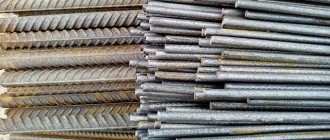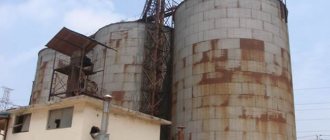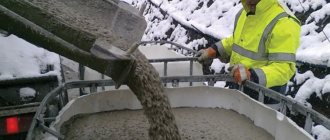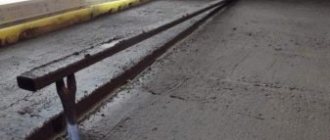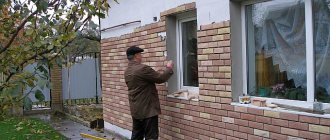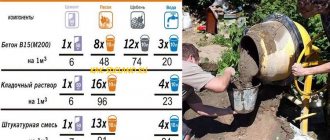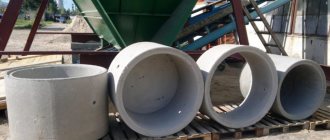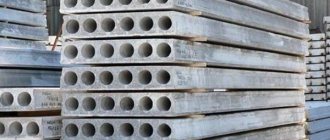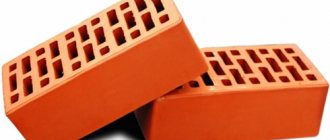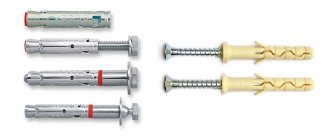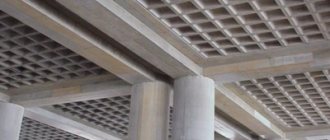Cement activity is defined as an indicator of the actual strength of samples specially prepared for analysis and tested under specified conditions defined by regulatory documents.
There are two parameters that determine the activity (grade) of cement - this is the determination of tensile and bending strength. For such tests, specially created samples of cement paste of normal consistency, measuring 40*40*160 mm, are required. All stages of their manufacture and testing are determined by GOST 310.4-81.
To determine the activity of cement, both direct and indirect methods are used. Direct methods are the most effective, but require a long time (the determination process is based on cement hardening), so indirect, faster methods are used for operational tasks. Here the approaches can be different: some use contraction, others evaluate activity through the electrical conductivity of the cement suspension. Estimating activity through electrical conductivity is a simple way, which cannot be called reliable. The predicted results do not have a methodological justification and therefore cannot be recommended for use in serious cases.
The action of contractionometers is based on establishing a connection between the activity of cement and the process of reducing the volume of cement as a result of hydration of a specially prepared cement mortar. This is the only type of instrument that can be considered effective for the rapid determination of cement activity.
There are contractionometers KD-07 and VM-7.7, which can give a methodologically sound result, however, in this case, in the process of determining the activity (grade) of cements, visual observation of the technological process is required, as well as manual calculation of the results in accordance with the established methodology.
Preparation of cement mortar of normal consistency to determine the grade of cement
Determining the grade of cement involves preparing a cement-sand mortar in a given manner. To mix the solution in a 1:3 ratio you will need:
- 500 g of cement (directly from the sample assigned for research).
- 1.5 kg of sand. To obtain an accurate result, it is important to choose the right sand - pure (washed) quartz sand with a SiO2 content of at least 98%. The moisture content of the material is less than 0.2% with losses on ignition of less than 0.05%.
If these conditions are not met, then the assessment of the cement grade cannot be considered correct.
Both components are poured into a bowl, the inside of which has been wiped with a wet cloth. The time for mixing is 1 minute. Then a well is made in the mixture, into which 200 g of water is poured. The time allocated for absorption is 0.5 minutes, and then mixed manually for a minute. Next, the mixture is placed in a mixer (the bowl is wiped with a damp cloth) and stirred for 2.5 minutes. At the end of the process, you need to evaluate the consistency of the resulting solution. To do this, use a shaker, which simulates vibration compaction of the solution.
The mixture is poured in two stages in layers of equal thickness into a standard cone shape mounted on the disk of the shaking table, and after that it is bayoneted according to GOST:
- bottom layer – 15 times,
- top layer – 15 times.
Then, in the specified sequence, the following actions are performed:
- The loading form is removed and the excess solution is cut off.
- The cement cone is shaken 30 times for 30 ± 5 seconds.
- The base of the cone is measured along the perpendicular diameters and the average is taken.
Making samples
Samples for determining the grade of cement are made of standard sizes in special molds. The molds must be detachable and made of durable material - for example, cast iron or steel. Before filling with the solution, the mold is lubricated with machine polish, and the joints are lubricated with Vaseline. The form is filled to 10 mm, placed on a vibration stand and after starting the installation, the form is filled completely - portionwise for 2 minutes. After three minutes, the installation is turned off, and the excess mixture is removed with a knife dipped in water. The sample is smoothed, marked and, leaving it in the mold, is kept in a specialized bath with a hydraulic seal for 24 hours (if the sample cracks, it is left in the bath for another 48 hours). They are then taken out of the bath, removed from the molds and placed in a pool of water. The water should be 20 ± 2 degrees Celsius and cover the samples by at least 20 mm. The water in the pool is changed every two weeks. And after 28 days of hardening, they are removed from the bath, tests are carried out in a maximum of an hour.
What is cement activity
Cement activity (GOST 310.4-81) – strength when tested in compression of a sample of cement mortar. After laboratory tests, the material is assigned a grade (manufacturers must indicate it on the packaging). For example, CEM 32.5 (M400), CEM 42.5 (M500) or others.
Cement can react with moisture in the air, forming a hard cement stone, which subsequently negatively affects the strength of the cement or concrete dough being produced. The activity of cement is measured in MPa, as is its grade.
The peculiarity of concrete and cement is that these building materials only become stronger over time during use. This is due to the fact that the hydration process occurs continuously. There are three stages of cement hydration: the active phase, the promising phase and the degradation phase.
Active phase
Lasts 28 days - the period of complete hardening of the cement mortar. Most of the components react with water and crystallize during this period.
Prospective phase
Throughout the year, complete crystallization occurs, and the strength of the cement approaches its maximum value.
Degradation phase
Crystallized minerals are destroyed during corrosion, cracks appear in the product, and the structure of the concrete is disrupted. The chemical activity of cement can be even one and a half to two times less than its grade. For example, the activity of cement CEM 32.5 (M400) is usually 200-330 MPa, and the activity of cement CEM 42.5 (M500) is 250-420 MPa.
Cement activity table (several manufacturing plants are presented):
Types of determination of strength limits
Depending on the characteristics of the further use of cement and concrete based on it, there are several different approaches to determining activity. Let's consider several methods.
Determination of bending strength
The essence of the method is to gradually increase the load on the sample using a special press (loading speed - 50±10N/s). In this case, the samples are tested with their transverse edge positioned longitudinally. The final result is taken as the arithmetic mean between the two highest test scores of the three samples.
Determination of compressive strength
This method requires a uniform load with a maximum force of 200-500 kN. To do this, three samples, divided into halves, are placed between special polished metal plates. The contact area between the sample in the longitudinal position and the plate is 25 cm2. After alignment on the base plate, the average of the four highest values is taken as the result.
Determination of cement strength during steaming
To manufacture structures made of concrete or reinforced concrete, it is sometimes necessary to reduce the curing period. For this purpose, heat-moisture steaming is used. That is why for such cases it is advisable to use the determination of cement activity during steaming.
Sample preparation and all procedures are carried out under standard conditions, but steaming must be done in a specialized chamber. The standardized temperature is 20±3 degrees Celsius with the heating off for 2 hours. The strength value is determined in accordance with GOST.
However, all these methods require a very long time. The fastest method for determining the grade of cement without loss of measurement accuracy is contractiometric. It uses indicators of the decrease in solution volume during hydration of the material for evaluation. It is these data that form the basis for calculations of cement activity. It is this method that formed the basis of the new device from the Interpribor enterprise.
This device allows research to determine the activity of cement to be carried out in an accelerated mode - that is, in fact, within 3 hours. Also, “Cement-Forecast” allows you to work with such measurements as cement setting time, frost resistance, strength and water resistance of concrete.
What it is
Accurate determination of cement activity demonstrates the absolute strength of the test sample made from cement mortar. Based on the obtained indicators, the binder is assigned one or another brand and the concept of activity is no longer used (it is not indicated in the technical documentation). But there are certain cases when the activity and brand of cement are established at home.
The level of strength may vary depending on what type of additives are added to the composition and in what volumes. At the same time, it should be taken into account that additives affect the characteristics of the mixture and activity, but not the brand of cement. For example, a hardening accelerator can, to varying degrees, reduce the time it takes for a monolith to gain strength, but it does not affect the hardness of the stone.
Thus, it turns out that the activity of cement is a peculiar behavior of the structure of the material during the service life of the poured structure or product.
- During the first 28 days after preparing the solution, the monolith gains strength according to the design, at this time the main volume of the structure reacts and crystallizes.
- During operation, crystallization may still occur, but activity at rest may be absent.
- End of life - the minerals in the crystals begin to react with water, which leads to corrosion, deformation and other changes.
Marking and decoding
Each type of cement has a specific marking. It shows which application the binder powder is suitable for. Consists of numbers and letters.
Table with explanation of cement markings of different types:
| PC | Portland cement |
| SS | sulfate-resistant |
| ShPC | slag Portland cement |
| GF | hydrophobic |
| BC | white cement |
| WRC | waterproof expandable cement |
| PL | plasticized |
The strength grade of binder powder is designated by the letter M and a number after it, for example, M500. This means that the material can withstand a load of 500 kg/cm2. Also, this characteristic can only be indicated by a number - 22.5, 32.5, 42.5 and 52.5. In this case, it is called not a brand, but a class. It means that the product can withstand pressure, for example, 22.5 MPa.
Table with new and old markings of cement grades:
| Old | New |
| M300 | 22,5 |
| M400 | 32,5 |
| M500 | 42,5 |
| M600 | 52,5 |
Also on the bags, in addition to markings on strength characteristics and frost resistance, the speed of hardening is indicated.
What does cement activity mean?
When determining strength characteristics, standard concrete cubes with an edge of 200 mm are made. Next, such a cube is compressed using a hydraulic press until the sample collapses.
Thus, the most important characteristic for this substance is strength, on which the durability of all buildings where it is used depends. To put it more correctly, the strength properties of this building material are called in one phrase: cement activity.
Before releasing it for sale, standard tests are first carried out, then the result is compared with generally accepted indicators and, on the basis of this, it is assigned a certain class and brand.
It is also important to know that under the influence of more than one factor, the activity of this building material may decrease. Many manufacturers and sellers of these products are puzzled by this problem.
Some people have probably seen global sales of cement at reduced prices and wondered what this is connected with. In fact, such large discounts are not made in vain, because over time, the strength of cement drops by more than a quarter of a percent. But this process is affected not only by its shelf life. So what are the influencing factors?
Technical characteristics of Portland cement
The quality of Portland cement is assessed based on the following characteristics:
- Density. This value is determined by the mineralogical composition of the material. In a loose state it is in the range of 0.9-1.3 t/m3, in a compacted state – 1.5-2 t/m3.
- Setting period. This technical characteristic is an important property of Portland cement. It depends on the mineralogical composition of the raw material, grinding fineness, water-cement ratio, and ambient temperature. Setting should begin no earlier than 45 minutes, and end no later than 12 hours after mixing the Portland cement. According to standards, Portland cement intended for creating concrete road surfaces can set only 2 hours after mixing.
- Grinding fineness. This value, equal to the total surface of grains per unit mass of cement, significantly affects the technical characteristics of the material, in particular, the rate of its hardening. For ordinary Portland cement the grinding fineness is 2500-3000 cm2/g, for fast-hardening cement it is 4000-6000 cm2/g.
- Uniformity of volume change during hardening of the cement cake. This is one of the main technical characteristics of Portland cement. Uneven setting is typical for binders that contain too much free lime or magnesium oxide. The uniformity of volume change is measured on four cakes, which are made from cement paste of normal thickness. Tests are carried out using the boiling method. The cement is considered to have passed the test if on the front side of all the cakes there are no: a network of small cracks or large radial cracks reaching the edge.
- Water-cement ratio (water demand). This term refers to the amount of water required to produce a product of the required plasticity. For Portland cement, the water-cement ratio is approximately 25%. If it is necessary to reduce it, plasticizers are introduced into the raw material mixture.
- Water separation. This process occurs when a mortar or mixture hardens due to the sinking of particles of binder and aggregates under the influence of gravity. Water may appear on the surface of a concrete element, between layers of mix or mortar, around aggregate particles or reinforcing bars. The presence of such thin films of water inside a concrete element significantly reduces its strength and durability.
- Frost resistance. This property characterizes the ability of a hardened cement-sand layer or concrete structure made on the basis of Portland cement to withstand freeze/thaw cycles without loss of performance characteristics.
- Corrosion resistance. It is usually divided into chemical and physical corrosion resistance. Chemical corrosion resistance depends on the mineralogical composition, namely, on the ability of the components to withstand exposure to chemically aggressive environments. Physical corrosion resistance is improved by reducing the porosity of concrete, reducing the pore radius and treating them with hydrophobic compounds.
- Heat dissipation. This property characterizes the amount of heat generated during the hydration of cement. Portland cement, which generates too much heat, cannot be used in the construction of massive structures due to the large difference in temperatures on the surface and inside the concrete element. To regulate the heat release of cement, special active additives are used.
Axial tension of a concrete sample
Such a characteristic as the axial tension of concrete is usually not taken into account. Axial tension can be used to determine the ability of concrete to withstand fluctuations in temperature and humidity without cracking or breaking the concrete.
This parameter can be calculated by stretching concrete beams using research equipment. In this case, destruction of the beam is observed under the influence of opposite tensile forces. The axial tension value can be increased by adding fine-grained aggregates to the mixture.
